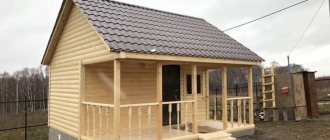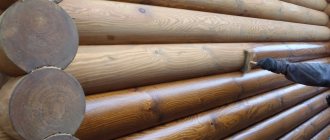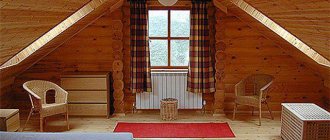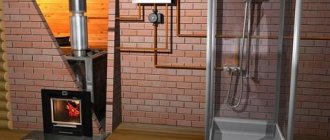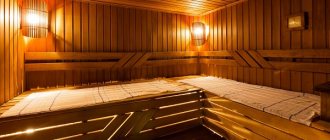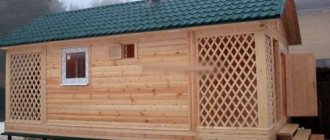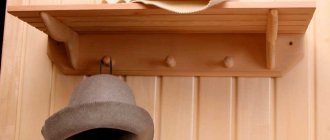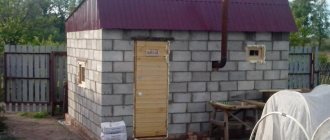The bathhouse must have a good ventilation system. Intense air flow is simply necessary in a steam bath or sauna. In one hour, several full volumes of air can change there. It is better to have a detailed technical design before making ventilation in the bathhouse. Now there are many standard bathhouse designs with working drawings. There you can find an option for any area.
Many baths, especially medium and large ones, are equipped not only with the main stove, but also with additional heaters. They can also be added to general ventilation if their design provides for heating the air in the flow.
The overall system design must take this into account. Another new solution in this area is convection ovens. They are very effective. Bath options have a pipe for external air supply.
Ventilation in the steam room, despite its intensity, should not allow drafts when firing the stove. The best way to solve this problem is to provide air flow only after preheating.
Most often, this is placing the supply valve at the bottom next to the stove. In a convection oven it is only required as a backup and is closed at normal times.
Ventilation of Finnish saunas "Bastu". Do it yourself
The term is translated from Finnish as “bad” - a bathhouse, and “stuga” - an insulated wooden structure. A common name is “Finnish sauna”. Ventilation in the Bastu bathhouse is a closed air space in the upper part of the sauna room, and below is a supply and exhaust system. This configuration ensures that warm air accumulates at the top of the sauna.
The system resembles an inverted dome with a closed upper volume. The room must have sufficient thermal insulation and tightness so that air does not leak through all the cracks. Heating is economical. The scheme has been tested in Finnish saunas and is very popular there.
Ventilation in the Russian bathhouse “Basta” is rarely done. There is a slightly different type of steam room. With large amounts of steam on the heater, this type of ventilation is inconvenient. It leads to stagnation of air in the room. At the same time, nothing prevents you from providing this ventilation option for variety.
Information. It’s interesting that by making Basta-type ventilation and adding at least a small concrete pool to the washing room, we get a Russian, Finnish bathhouse and sauna in one building. Operating modes will switch.
Another advantage that Basta ventilation provides in a bathhouse is efficiency. The absence of an overhead hood makes it possible to heat the room much faster. If the region where the bathhouse is being built does not have a large amount of inexpensive firewood, then this is another argument in favor of providing for the “Bastu” regime.
The absence of an exhaust hood at the top of the steam room is the main condition under which the “Basta” ventilation works in the bath; the circuit must necessarily switch to the normal ventilation mode. To ensure this, it is built according to the usual standard rules, which are described in this article.
To the standard set of upper and lower dampers, you need to add one more lower hood. As is the case with standard steam ventilation, the inlet and outlet should be as far apart from each other as possible. The optimal location is access to the opposite walls of the bathhouse, but this is not always possible.
In order for the “Bastu” ventilation to work in a Russian bath, the upper hood is closed and the lower one must be opened. In this case, the natural draft in the upper hood is greater than in the lower one. This must be taken into account when choosing the cross-section of ventilation ducts.
Nowadays, the typical layout of baths has a steam room in the corner of the building. The second corner is occupied by a washing room, and the remaining half is a rest room. The intake valve (inlet valve) is placed 20 cm higher from the floor of the steam room, between the outer wall and the sauna stove.
Very often, a sauna stove is installed in the middle of the sauna (so it simultaneously heats all three rooms). In this case, air must be supplied through a metal duct. You can’t just make a hole in the steam room to the street and cover it with a grate! This will certainly lead to drafts, which are completely unacceptable in the steam room. The air must be warmed up near the stove.
Attention! When closing the top valve and turning on the “Bastu” ventilation, less water should be poured onto the heater.
Otherwise, there is a risk of quickly overheating the bath.
Methods of organization and ready-made schemes
Let's consider several ready-made schemes for performing forced ventilation.
Scheme #1. Exhaust ventilation
Behind the stove, 0.3 m from the floor, a supply ventilation hole is installed. The exhaust fan is installed on the opposite wall, a little higher - 0.4-0.5 m from the floor. Fresh air, entering the steam room through the inlet, passes through the stove, warms up and rises to the ceiling. Gradually cooling, it goes down and is drawn in by the exhaust fan. This forced ventilation scheme is quite popular due to the simplicity of the device and the rapid change of air flows.
Scheme #2. Forced ventilation
In a large steam room, it is advisable to equip fresh air ventilation for a quick change of air. For better circulation, air flows are directed not from bottom to top, as with natural ventilation, but from top to bottom. An inlet with a fan is installed behind the stove, 0.5 m above its level. The exhaust hole is placed at the bottom of the opposite wall, at a distance of 0.2-0.3 cm from the floor.
Supply ventilation according to this scheme works as follows. Using a fan, cold air is forced into the steam room through the inlet. Once within the range of the stove, it quickly warms up and rises to the ceiling. Cooler currents are forced downwards and exit through the exhaust vent.
Scheme #3. Supply and exhaust ventilation
This diagram is intended for ventilation equipment in a steam room and shower. A supply vent with a fan is placed above the stove. The minimum distance from the heater is 50 cm. The exhaust vent (without a fan) is located on the adjacent wall next to the floor, away from the stove. In this case, the diameter of the exhaust air duct should be 2 times larger than the diameter of the supply air duct.
Another exhaust vent with a fan is located in the shower room adjacent to the steam room, under the ceiling. Air enters the shower room from the steam room through the gap under the door.
Do you need ventilation in a steam room?
The answer to this question is always unequivocal - yes, it is necessary. During operation, ventilation operates continuously and is often manually adjusted to a comfortable temperature. The steam room usually has a small volume of air and intense steam formation occurs there.
All this requires increased air exchange. At the same time, it is important not to overdo it. If ventilation is too intense, no stove, even the most powerful one, will ever heat the steam room to the required temperature.
In the bathhouse, under no circumstances should odors from washing waste accumulate.
There are two main rules here.
This is a good drainage system and good supply and exhaust ventilation of sufficient capacity.
If the quality of the waste system needs to be taken care of in the washing department, then in the steam room ventilation comes first. It is described in detail in any manual. On our website we provide the most detailed description.
General ventilation diagram in the steam room
Ventilation in the steam room is always supply and exhaust in various designs. All other schemes, for example, recirculation, as in a split-system air conditioner, are completely unsuitable here. There are two main elements in the supply and exhaust system.
This is a supply valve (air intake, inlet, inlet deflector) and an exhaust hood.
It is not necessary to have only one hood and only one supply valve.
If the steam room has a large area, then several of them are made, which creates a more uniform air exchange.
Proper ventilation in the steam room has air flow adjustment.
The same amount of firewood is not always used for the same amount of steam.
Climatic conditions also vary throughout the year.
The comfort temperature for visitors is also different.
You can't do without adjusting the ventilation. Ventilation adjustment is carried out using manual valves.
This old simple option remains the most convenient to this day. In the steam room, two valves are simply installed.
Information . The higher the hood is located in the steam room, the more energy is saved on heating. At the same time, air exchange also weakens, which must be taken into account. The complete absence of an upper hood is Bastu ventilation.
For lovers of modern conveniences, it is never a good idea to supplement manual valves with a common thermostat with valves in the steam room. This equipment is sold in specialized stores. Its characteristics vary greatly among manufacturers.
The only universal advice for installing such kits is to strictly follow the instructions. Ventilating a steam room in a bathhouse with your own hands does not require large material costs. You use standard solutions, blocks, modules and ready-made devices.
Important! It is advisable to conduct a test fire before finishing is completed and check how the assembled steam room ventilation works. All detected deficiencies must be eliminated.
What is ventilation in a sauna?
- From the point of view of ventilation, a sauna is a temporary room for several people, in which there is a high temperature and low/high (depending on the type) humidity.
- The presence or absence of ventilation in the sauna can be felt when staying in it continuously for more than 30 minutes.
- The ventilation in the sauna will operate differently during procedures and when the sauna is not in use and the equipment is turned off.
- The flow in the sauna is necessary not only for human comfort, but also for the efficient operation of the stove.
- The hood in the sauna operates on a constant basis. Also, the speed of the hood can be increased by adding a ventilation valve.
The sauna is a type of room with increased ventilation requirements. High demands mean frequent air changes. For a sauna this is at least 3/hour. To do this, the sauna must have inflow and exhaust.
Inflow
The supply to the sauna comes from the adjacent room. Any room from which it is convenient to organize this influx is suitable.
When ensuring inflow into the sauna, you must understand that inflow into the entire building must be ensured. This will allow the ventilation in the sauna to work correctly, because... Properly functioning ventilation in a sauna cannot exist without properly functioning ventilation throughout the building.
The classic option for inflow into the sauna is the gap under the door. To do this, use doors without a threshold, which are installed so that the glass panel rises 4-6 cm from the floor.
Another common option is an inlet behind the stove. With this option, the stove is directly supplied with fresh air, which circulates the air heated by the stove in the sauna.
Please note that a properly installed stove with a remote firebox is a priori equipped with such an inflow (I hope there is no need to explain why?).
Hood
The exhaust hood in the sauna removes waste air.
The hood should not go directly to the street. This is a very common mistake. Such a hood will work too intensely, removing a large amount of air, which will not have time to heat up in the sauna. Under certain conditions, a reverse draft may even appear, which will suck in air from the street.
The best option would be to discharge the hood into the general outflow system. If this is not possible, take it to a room adjacent to the sauna (you must understand that warm air will come out, sometimes with high humidity).
To summarize and confirm all of the above, I suggest turning to very authoritative sources, which are the quintessence of knowledge about the construction of saunas and baths, ventilation in them and the correct steam - instructions from the best manufacturers of sauna stoves. Harvia, EOS, Tylo and Narvi write about ventilation in the most detail.
When to build ventilation in a bathhouse?
The ventilation system is built at the stage when the walls and roof have already been erected and all that remains is to do the interior finishing. At this point, it is most convenient to work on the ventilation ducts and grilles. If there is a standard project, then all parts are purchased according to the drawing. Do-it-yourself ventilation in a bathhouse is often created without a ready-made standard project.
Ventilation of the foundation is provided at the stage of its construction. This is a simple row of rectangular holes on opposite sides of the plinth. All of them are covered with mesh. The ground floor (underfloor), all interior spaces, the attic or attic are made ventilated.
The closed volume has cavities with insulation: inside the walls (in the panel structure), inside the floor and inside the ceiling. If ventilation appears in these volumes, the insulation begins to deteriorate.
General tips and recommendations for arranging ventilation
Ventilation in a bathhouse is the process of removing exhaust air and completely replacing it with external air masses. The mechanism of action of the ventilation system is quite simple - through one hole fresh air masses enter the steam room, and through the other they are discharged outside.
To organize a proper, effective ventilation system with your own hands, you must follow the following recommendations:
- The flow of outside air is ensured at floor level in the immediate vicinity of the heater. Air masses are taken from the street or the room adjacent to the steam room. If the stove in the bathhouse is located at a distance of one meter from the door, air can flow through the gap under the door (the size of the gap varies from 2 to 5 cm).
- The outflow of exhaust air masses is carried out at a level of at least one meter from the floor surface at the maximum possible distance from the heater. When installing a wood-burning stove with a built-in firebox, part of the air masses will be vented outside through the chimney.
- Openings for air inflow and exhaust are equipped with special devices (hatches).
Note!
A ventilation system is necessary not only in the steam room, but also in other rooms of the bathhouse. The rest room, dressing room and washing department must also be ventilated efficiently and in a timely manner.
Only a well-ventilated washing room will truly heal, warm and serve the owners for many years. After all, only fresh air relieves the damp floor, walls and ceiling in a sauna or bathhouse from destructive fungus and rot.
When designing a bathhouse ventilation system, make sure that it is a supply and exhaust system with natural air movement. For example, if the bathhouse is built as a separate building, then the foundation must have vents located on opposite sides; in addition, gaps of five to seven millimeters remain in the white floor between the boards. These holes will allow the flow of fresh air to freely enter the steam room.
If the sauna stove is located in the sauna room itself, then it is positioned so that the firebox vent is slightly below the level of the white floor. In this case, the oven itself will work perfectly as an exhaust device.
How to properly ventilate a bathhouse?
To ensure proper ventilation, you need to follow some simple rules. The main criterion is productivity. If the ventilation system does not provide the required air flow, then the entire system will have to be redone. It's better to deviate in the other direction. Make allowances for the thickness of the air ducts, the size of the grilles and the power of the fans (if any).
Proper ventilation in a bathhouse always has a good performance margin. Ventilation at full capacity is rarely required. During normal operation, the system is adjusted by gates and valves to the required volume of air flow.
Ventilation tips
The most effective of many schemes is bastu. It is quite simple to do in both a new and an existing bathhouse.
We offer two videos that describe in detail the structure of the Swedish system.
Here the author installed a damper on the exhaust, but not on the supply. It’s not difficult to make: it can just be a metal plate.
Full review, interesting scheme for warming up the waiting room.
The authors of these materials described and showed in sufficient detail the stages of creating a ventilation system. In both videos there are interesting comments on where you can find rational grain for your existing or under construction bathhouse.
The distance from the bottom edge of the hood to the floor causes a lot of controversy. There are general recommendations, but since each bathhouse and climate are individual, the distance indicated by someone cannot be a dogma. The ideal interval is determined experimentally. To do this, a movable tube is placed on the lower edge of the exhaust pipe.
Proper ventilation in a bathhouse is a simple scheme with natural air movement. Fans in conditions of high humidity and temperature changes can fail at any time. A complex system with many air ducts is also unreliable.
What can a ventilation system be assembled from?
Installation of ventilation in the bathhouse is carried out from ready-made components. They must be purchased in complete sets, which guarantees the technical compatibility of the parts. Place of purchase - any construction supermarket with good prices and assortment.
Here are the main components:
- non-adjustable ventilation grilles;
- ceiling deflectors;
- adjustable gates and valves;
- galvanized rigid air ducts;
- corrugated steel air ducts;
- plastic air ducts;
- connecting fittings: bends, tees, flanges.
Attention! In the steam room, the use of plastic components for ventilation systems should be limited.
There is no need to strive to make the ventilation system deliberately complex, with many adjustments. A functional, reliable approach is optimal. When choosing components, you need to remember that a performance reserve will never be superfluous.
It is better to take air ducts with a diameter of 100 mm or more. Rigid galvanized air ducts (similar to drainpipes) are the cheapest and most functional. Almost all modern ventilation systems are created precisely on their basis.
Galvanization perfectly protects steel from any amount of moisture in the air. Galvanized air ducts serve for many decades in kitchen steam hoods. Nothing prevents them from being used for bath ventilation.
Information. The hood from the steam compartment is vented to the roof. The duct pipe for it must be designed by the manufacturer for outdoor installation. Only if this condition is met will it last a long time.
In dacha conditions, there are almost always many components from other buildings that can be used in a new bathhouse. It is necessary that they are technically compatible and do not spoil the functionality and appearance of the new bathhouse.
Ventilation of the floor and foundation in the bathhouse
When organizing a ventilation system, even at the construction stage, it is necessary to think over a floor drying scheme. It is not recommended to cover a wooden floor in a bathhouse with protective moisture-repellent impregnations, since when heated they will release substances hazardous to the health of bathhouse attendants. That is why the floor in the steam room must be thoroughly ventilated and dried to prevent rapid deterioration and rotting.
A simple option for organizing a floor ventilation system in a bathhouse is to install support joists at a level of 20-30 cm from the ground and install boards with gaps of 5-10 mm. Dripping water will seep through the floorboards and flow into the ground. In this case, it is recommended to use sand or granular materials to fill the foundation.
Ventilation of the bathhouse foundation can significantly extend the service life of the building.
To do this, it is necessary to provide for laying in the foundation at the construction stage (ordinary pipes can be used, which are removed after the solution hardens). Ventilation ducts in the foundation provide free access of air to all rooms of the building.
When choosing the most suitable ventilation system for baths and saunas, it is necessary to take into account specific operating conditions. Proper placement of the supply and exhaust openings allows you to create a microclimate favorable for bathing procedures, increase the safety of using the steam room, and also achieve economical fuel consumption.
Do you need thermal insulation of air ducts?
We see thermally insulated metal air ducts in air conditioning systems. They went from there. There, the main function of thermal insulation is to prevent the formation of condensation. In the air conditioning system, air is supplied through the ducts, the temperature of which is lower than the surrounding air.
With the bathhouse everything is exactly the opposite. The air ducts supply air that is hotter than the outside air. Oddly enough, this condition is not always met. For example, if a long supply air duct runs through the insulated attic of a bathhouse, then condensation will form in it, just like in the air conditioner duct. In this case, external thermal insulation is necessary.
Important. The second purpose of thermal insulation on air ducts is to reduce noise levels. If you use fans, then buy insulated ducts. Otherwise, the entire ventilation system will make a loud noise.
Why integrate ventilation into the system? Can it be made separate?
A bathhouse or sauna usually has three rooms. They all have different temperatures and humidity levels. Despite this, combining ventilation systems is still beneficial. This saves materials and heating energy. The ventilation system of the rest room and washing room is most often combined. Whether to connect a steam room to it is a big question, since the air flow there is much more intense.
Types of ventilation
Bath ventilation is divided into two groups:
- natural ventilation, operating under the influence of natural factors without the use of electrical equipment;
We recommend that you read: Built-in hoods with a carbon filter without outlet
- mechanical or forced systems in which air movement is provided by a fan.
Mechanical ventilation allows you to control air circulation. The natural system is cheaper, but not as predictable.
Most schemes use the following principle: fresh air passes through the oven, is heated to a temperature close to the internal temperature in the steam room, and is removed from the opposite side.
Natural or forced air flow?
Natural air circulation is always more reliable. The ventilation system will not suddenly fail at the most inopportune moment. However, the main advantage why many people prefer natural ventilation is the low price. Before you make ventilation in the bathhouse with your own hands, you need to accurately calculate your budget. All ventilation components cannot be homemade. They must be purchased ready-made.
What do we now know about ventilation?
The following conclusions can be drawn from the information provided:
- Ventilation in the sauna should be linked to general ventilation.
- The natural inflow should be close to the heater.
- The natural exhaust should be higher than the inflow, and the size of the hole should also be larger.
- The hood can be carried out through the adjacent room.
- To ventilate the sauna, you can use the ventilation valve near the ceiling or open the door.
- Mechanical ventilation should only be used if you have the necessary knowledge. Do not forget about the correct operation of the sensor.
- The air exchange rate should be 3-6/hour.
Tell us what you know about ventilation, ask your questions and clarify unclear points in the comments.
Canadian cedar lining - buy in Moscow at a low price
ventilation
conclusions
Bath ventilation ensures normal operation of the bath, good air exchange, and the absence of foreign odors. You need to approach it responsibly and choose a good set of materials.
- provide a capacity reserve for the diameter of air ducts, grilles and roof hoods;
- installing a hood on the roof increases draft and improves overall ventilation efficiency;
- in wooden bathhouses made of logs, cutting corners is prohibited;
- fans, convectors, heaters and other devices must be of a moisture-resistant “bath” design;
- combining the ventilation of the bathhouse allows you to save on heating, but it is still better to do the ventilation of the steam room separately.
Before making ventilation in the bathhouse, draw up a detailed project and select a set of necessary materials. Everywhere you can use proven standard solutions and simple formulas for calculating air ducts.

